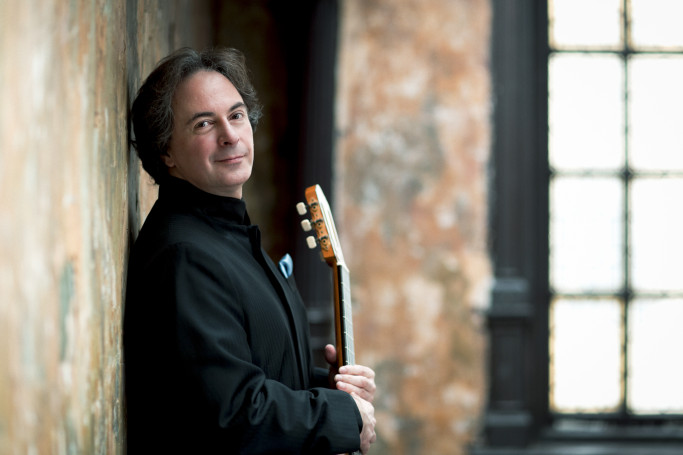Christoph Denoth, guitar
SubCulture, New York, NY
June 10, 2019
In celebration of his newest CD release Tanguero: Music from South America (Signum Classics SIGCD 538), guitarist Christoph Denoth appeared in recital at SubCulture on June 10, 2019. With works by Villa-Lobos, Brouwer, Piazzolla, and Matos Rodriguez, it was an opportunity for one to hear not only the work of a outstanding musician, but also his thoughts about composers and their works as he spoke to the audience.
The basement confines of SubCulture are ideally suited to this type of event. It has the intimate feeling that is characteristic of smaller venues, but also comfortable seating and ample room to move about. One could enjoy a wine or other beverage at the bar before the concert. The one oddity was the almost subliminal level music being piped in prior to the performance, which might be okay for a more casual concert, but really was distracting for this kind of program, which benefits from some silence beforehand.
Mr. Denoth opened with the Villa-Lobos Cinq Préludes, one of the staples of the guitar repertoire. They pay homage to the varied peoples of Brazil, from peasants and urbanites to the indigenous, with a tribute to J.S. Bach as well. They are filled with Villa-Lobos’s characteristic folk idiom as well as a Romantic spirit. Mr. Denoth captured the flavor of this music in highly nuanced performances. He followed with the Villa-Lobos Etude No, 11 (Paris 1929), another example of both the composer’s highly idiomatic guitar writing and the fine playing of Mr. Denoth.
Leo Brouwer’s 1990 Sonata (for Julian Bream) followed the Villa-Lobos works. Each movement is influenced by a different epoch. The first movement, Fandangos y Boleros was humorous, an almost self-deprecating example of Spanish styles, with occasional “wrong notes” popping up. The second movement, Sarabande de Scriabin was a look at the Russian before his “Mystic” transformation. The final movement, Toccata de Pasquini was a moto perpetuo with a “cuckoo” call. Mr. Denoth played with unflagging energy as the music simmered, but he was always well under control. The Brouwer was this listener’s favorite work of the evening.
Four Piazzolla pieces followed, Chiquilín de Bachin, Verano Porteño, Oblivion, and Triunfal. When one thinks tango, one thinks Piazzolla, such is the power of the composer’s mastery of the style. Mr. Denoth did not disappoint- the soulful laments, the fiery passions, and the infectious rhythmic vitality were all on full display.
Gerardo Matos Rodriguez’s La Cumparsita ended the program. It’s the tango everyone knows, even if they don’t know the name or the composer. Heaven knows how many cartoonish renderings have been done, complete with the rose-in-mouth, but thankfully there was none of that here. Mr. Denoth played it straight, which revealed subtleties often lost in the hammy performances.
Mr. Denoth does not rely on his formidable technique alone. The fast runs, the harmonics, and the cascades of sound that made it seem if there were multiple players were all there, but one never was overwhelmed by these qualities to the detriment of the music itself. Mr. Denoth is like a skilled painter carefully creating a masterpiece – each note and phrase is given the right “color.” The pacing is never hurried, but the rubato used is never excessive either, and the expressive aspect is always the priority. Even though it was obvious that Mr. Denoth had thought out every note carefully, the end result was still completely natural in sound and execution.
Mr. Denoth offered Joaquin Malats’s Serenata Española as an encore, to the delight of the appreciative audience.


